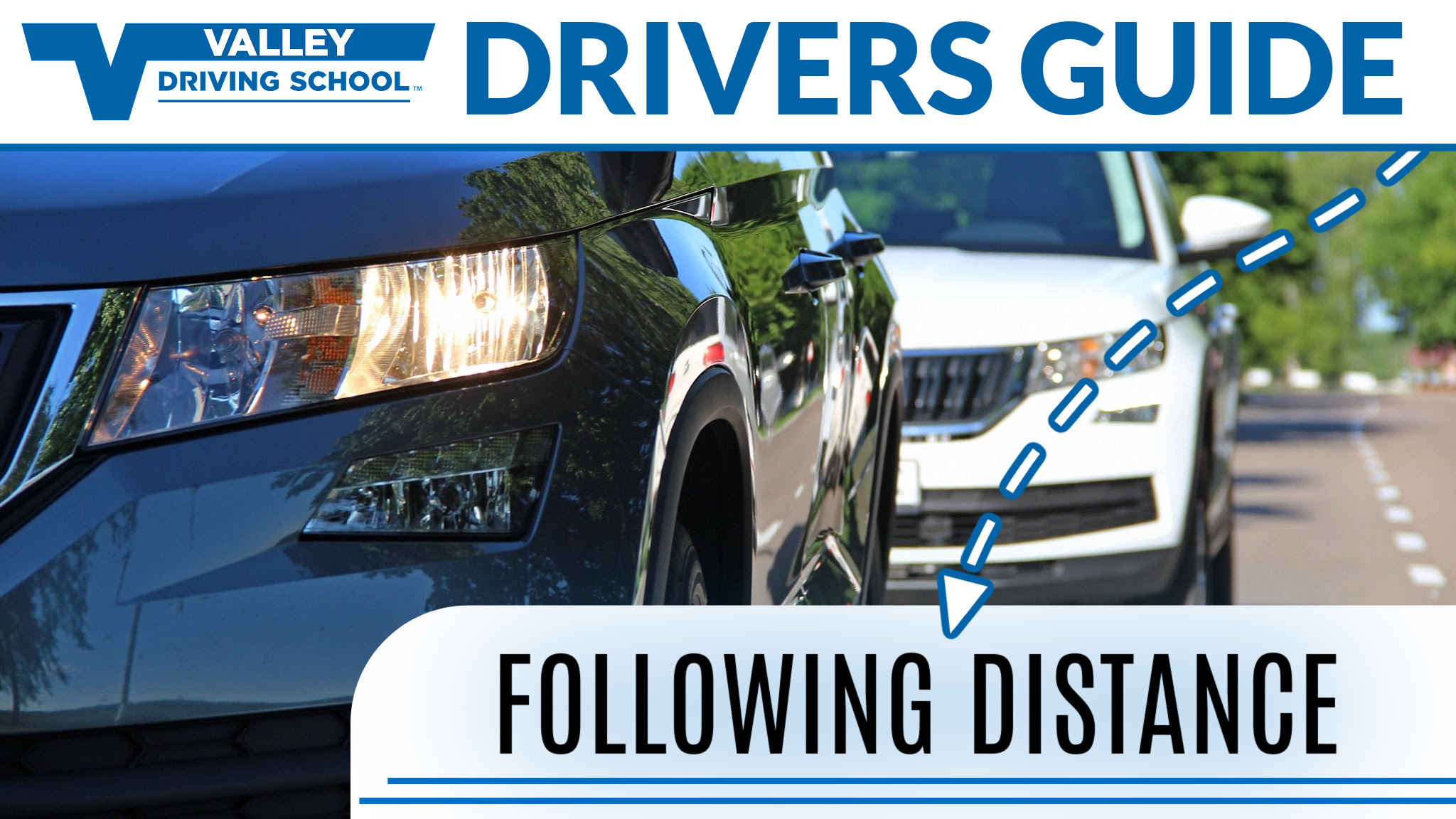Space margins refer to the amount of space between you and other road users, and following distance is something that is measured between you and the vehicle in front of you. Leaving adequate distance within this space plays an important part when utilizing the see-think-do driving strategy. Giving yourself enough following distance means that you will have enough time to see hazards, think about what your options are, and react accordingly. When you follow too closely to road users ahead of you, you may not have enough time to react and respond to hazards or incidents.
What is Following Distance?
 In ideal conditions when the sun is out, the weather is good, the roads are clear, and everyone’s going the speed limit, the suggested following distance is two seconds. If you’re on high-speed roads, like freeways and highways, this should be increased to at least three seconds.
In ideal conditions when the sun is out, the weather is good, the roads are clear, and everyone’s going the speed limit, the suggested following distance is two seconds. If you’re on high-speed roads, like freeways and highways, this should be increased to at least three seconds.
Other times when a three second distance is best are:
- when you’re behind a large vehicle, such as a bus or semi-truck, that blocks your vision once you’re too close
- when you’re behind a motorcycle that could come to a quick and unexpected stop
- when you’re driving on an unpaved road where dust or gravel may be kicked up into the air and end up damaging your windshield
- when a vehicle is following closely behind you - in the event that you are rear-ended by another vehicle, a decent following distance will prevent any further collisions with the vehicle in front of you
In less than ideal conditions where the sun has hidden itself, a storm has arrived, or you’re driving on a slippery, uneven, or gravel covered road, best practice means increasing that distance to a cautious four seconds.
Motorcycles & Semi-Trucks
If you’re the one on the motorcycle, it’s important to remember that motorcycles are smaller than passenger vehicles so it’s easy for them to go unseen or end up tucked away in a driver’s blind spot. To avoid this (which you should), make sure that you either ride up ahead of the vehicle or you ride far enough behind that you’re visible in their mirrors. This also ensures your safety in the event that they suddenly switch lanes without signaling.
If you happen to be the driver of a semi-truck, on the other hand, it’s important to remember that your air brakes have a lag time of approximately 4/10 of a second between the time you apply them to the time they actually begin to function. Don’t forget to add the braking time to this too, which is the time and distance that your vehicle will travel before coming to a complete stop. For this reason, it is so important to allow plenty of distance when following others. While passenger vehicles and light truck drivers abide by a general minimum of two seconds distance, semi-trucks, buses, and other large heavy vehicles need to abide by a minimum of five seconds.
How to Calculate Following Distance

How do you measure distance in seconds? Great question! Pick an object ahead of you near the road that will not move, like a sign, fire hydrant, overpass, or lamp post. When the vehicle in front of you passes this object, start counting. “One thousand and one, one thousand and two, one thousand and…” if you reach the object as you count to “three,” you’re successfully keeping a three second distance!
Be a Defensive Driver
If you find that you’re keeping a safe and respectful distance on the road, but others aren’t, the best thing to do is to slow down slightly and increase the space in front of you. When you do this, you allow for a more gradual stop if necessary and you actually decrease the chance of the person who’s tailgating you crashing into you. If they are REALLY making you uncomfortable, moving into another lane if possible, or even pulling over entirely to let the tailgater pass should be considered. Whatever you do, don’t give in to the pressure and speed up, and always maintain your own following distance between yourself and the vehicle in front of you.
–
By looking ahead, maintaining enough following distance for the road conditions, and avoiding peer pressure from other drivers tailgating or speeding, you can decrease the risk of a collision by avoiding sudden stops and becoming agitated while driving. You may not be able to control other drivers and their actions, but you can control yours!

